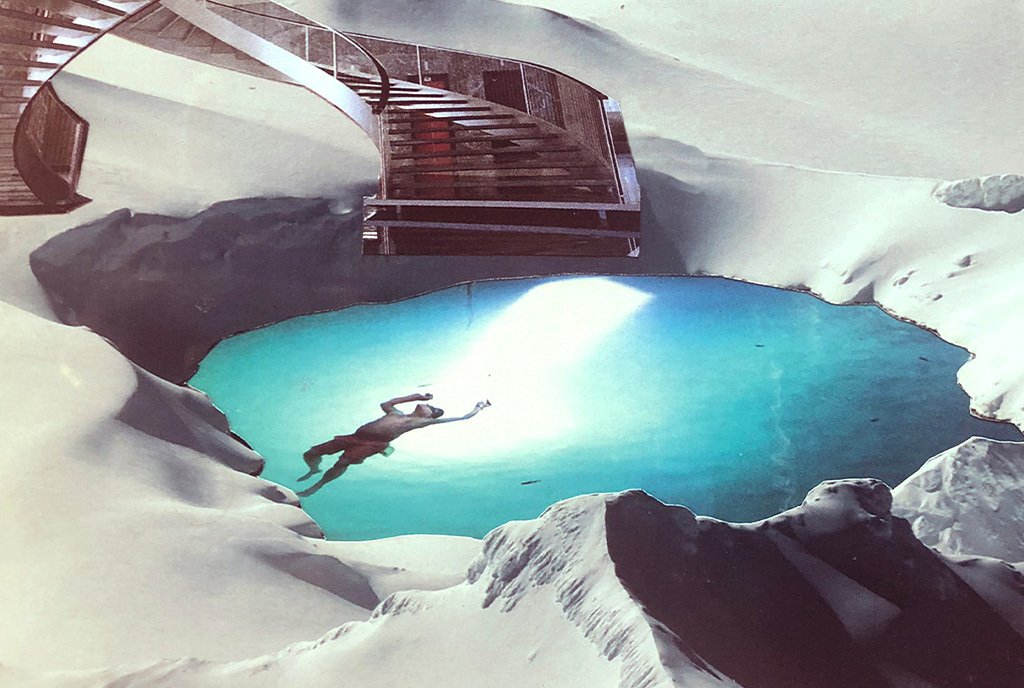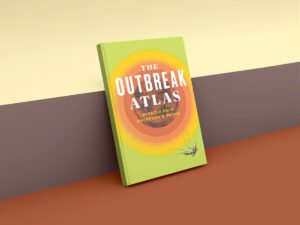
Editors’ note: This piece is from Nonprofit Quarterly Magazine’s fall 2023 issue, “How Do We Create Home in the Future? Reshaping the Way We Live in the Midst of Climate Crisis.”
Pawkar killa, 2238
She learned about them in school; the tourists. How they used to come to what is now her home and have their pictures taken, leaning on the buildings they now live in, standing like a triumph atop their terraced farmland, sitting in the middle of the patch of green where they now have community gatherings. Sometimes she finds their things buried beneath a hundred years of earth. Mostly there is plastic: crunchy thin-walled bottles and dull-colored wrappers. She didn’t know what they were until the elders told her: “The way food used to be,” they’d said, and she couldn’t imagine the kinds of food that came covered in plastic. But sometimes there are other things, things that she doesn’t have to ask anyone about: a button, a leather boot, a heart-pendant necklace. She likes those things the most, the ones that pulse with life. The intimacy of those objects shakes her; those things belonged to someone, and that someone had a life.
The sun is low in the sky and the shadows grow long, but still, Pakarina and her mother are going to check the fountains because that is what they do—what all yakukamakkuna do. They are Water Keepers. Pakarina trails a few feet behind her mother as they climb the pathway up the mountain, her ten-year-old legs sturdy and accustomed to the climb but not as long and strong as her mother’s. But none of this is new; they could walk this path in thick neblina—mist—in the dark, in their sleep, because this path has been their entire lives.
As they walk, Pakarina stops for a moment and turns around. Below, evening fires dot the landscape, and the village is alive with sound and light. She can hear the faint music coming from the square—already, they’re gathering to listen to songs and stories. In a moment, like a lightning bolt, she thinks of the tourists—a strange thought that enters her brain, something that almost feels intrusive. But as she stands there taking in a lungful of air, she understands why they came. She has seen nothing of the rest of the world—has never set foot outside their comuna—but she is grateful to exist in that moment and witness the beauty that is the sharp outline of Machu Picchu against the sky. The clouds pour over the cordillera, the mountains’ peaks slicing through the dense neblina the way river rocks cut water. In this place, the grass is still green and the air is still breathable, not like some of the other places she has heard of. And now, the same breeze that sways the stalks of corn and the red tops of quinoa also sends a ripple down her spine, and she turns back toward her mother, sets one foot in front of the other.
***
Sisa can hear her daughter’s footsteps, the steadiness of them punctuated by moments of quiet. She doesn’t need to turn around to know something has caught her eye. She has always been a curious child; “Pakarina, the child of a thousand questions,” she likes to call her. Nothing at all like her older daughter, Tamya, who is a being of the here and now. Sisa and Tamya are two of a kind—mother and firstborn daughter, content to lose themselves in their work, not wanting to think of the unknown. But Pakarina loses herself in the flow of the water, in the collection of past-things she keeps in a basket near her bed, in the stories she imagines in the stars. Sisa knows more about the past than she would like. Sometimes she thinks it would be easier to know nothing, but that is not their way. They all must know.
She, too, learned about it in school. As she climbs alongside the fountains that cascade down the mountain—sixteen in all—Sisa remembers sitting out there on the green as a child, listening to the yachachikkuna, the teachers taking turns as knowledge givers and storytellers. They told them of the inauspicious beginnings of The Great Awakening: snowless winters, wildfire summers, droughts that lasted too long. They told them how people didn’t believe or maybe just didn’t want to believe.
The water’s flow is music in Sisa’s ears. The thought of the fountains running dry sends chills. How lucky we are to not know thirst, she thinks to herself. The elders said The Great Awakening came like a crescendo, layer upon layer of catastrophe until things like being a tourist and seeing the world became meaningless. Oceans became hungry mouths eating away at shorelines. Fires engulfed forests as quickly as the snaps of fingers. Storms gathered and wouldn’t stop gathering, like they were on a quest for vengeance. People scrambled, fled, made home wherever they could. Eventually, the world came to a standstill; music stopped and water stopped and people stopped. It was a miracle, she thinks, that the world itself didn’t stop too. The thought of all of these things comes to her in a rush, and she does her best to push away the images of parched mouths and cracked earth and a world ablaze. She is here, right now, her child trailing behind her, and the water is sweet and flowing.
***
Her mother reaches the top before she does, the first fountain in a cascade of other fountains. Right away, she gets to work, knowing exactly what needs to be done. In truth, there’s not needed today, but she takes pride in showing her mother that she knows what to do. In another life they might have been called hydraulic engineers, but now they are called Water Keepers, because it is that difficult and that simple: keep the water clean and flowing. And now it strikes her that this, too, is history. These fountains, this place. It was the hands of her ancestors that constructed the water system they still drink from, the very houses they live in; they were the original Keepers.
When they are done, they cup their hands together and hold them beneath the water, each of them whispering the same prayer of gratitude to the earth and water and sky. This, too, feels like history; the need to reconnect with the things that sustain them. She feels a question rising within her as they stand in the evening’s quiet. Usually, she reserves her curiosities for sleepless nights, for when the moon is as full as a woman with child, and she can hear voices echoing down through the centuries. But she is beginning to understand that there is never a bad time to speak up.
The question flows from her like water, something she has never asked: “Why did the ancestors leave here in the first place?”
Her mother sits on the stones at the fountain’s edge, looking out into the watercolor sky. There is a long pause before she speaks. Her mother has always been a woman who considers her words.
After a moment, she says, “Do you know the word apocalypse?”
Pakarina thinks for a moment. “Like The Great Awakening?”
Sign up for our free newsletters
Subscribe to NPQ's newsletters to have our top stories delivered directly to your inbox.
By signing up, you agree to our privacy policy and terms of use, and to receive messages from NPQ and our partners.
“Yes, something like that. It is a time when everything is destroyed. Catastrophe everywhere. A long time ago, men came from across the sea. When they set foot here, they brought disease and destruction. And for us, everything since then has only been sequela. We lived in a postapocalyptic world long before The Great Awakening.”
Pakarina tries to imagine it the way her mother tells her—an ocean she has never seen and the men who crossed it. She has only ever seen such things in books, in the community library not far from the village square.
“And so the ancestors left this place. But even in our postapocalypse, our family has had the fortune of good record keepers—storytellers and chroniclers, those who memorize and those who write. And our people have gone around the world and back again.”
There is a moment of quiet, Pakarina too lost in thought to ask more questions.
“Did you know there was a great migration?” her mother asks her. Pakarina shakes her head. “No, no. Más bien dicho, a diaspora,” she corrects herself. “Years before The Great Awakening, the people left this land. They headed north, chasing stories they’d heard, hoping for miracles. And most of them stayed there, working the jobs no one else would do.”
“And then what?”
“And eventually, when The Great Awakening began, some of them came back. Your great-great-grandparents, for example. They were the descendants of the ones who headed north. Maybe this land called them back; they heard the promise of a different kind of miracle. You know how the earth and water have voice and memory? I think that even though they’d forgotten how to hear those voices, perhaps that was what helped them return, that voice that lives inside all of us.”
Pakarina can feel her chest swell and her heart thud within her as if she has uncovered the greatest of all discoveries. In her veins runs the blood of survivors, centuries of suffering, lifetimes of endurance.
***
Sisa can see it on her daughter’s face, that far-off look she gets when she is thinking. There it is: the truth of things. She has always felt it—how the weight of history itself is too much to hold, the weight of the future too much to envision. Even seven hundred years and too many world-ending events later, it still stings. To know of all that happened. To know that in their blood flows both the enslaved and the enslaver, the oppressed and the oppressor. To know that only two centuries earlier there were people who could have stopped The Great Awakening from happening but didn’t. All the millions of years that led to this moment, to a life that is both fragile and hopeful. But maybe that has always been the way. They have always existed at the edge of possibility, in the narrow space between survival and oblivion.
“But you know something?” she says, calling her daughter back from wherever her mind has taken her. “Despite everything, I’m glad things happened the way they did. All of it, I’m happy. Because it led to you. If it hadn’t happened that way, I wouldn’t have you, ñukapa shunkulla. We wouldn’t be here right now. And that would have been the greatest catastrophe.” She reaches over and picks up her daughter’s hand from her lap, still so tender and small; she kisses the back of it and whispers a prayer only she can hear. Gratitude to the earth and water and sky for bringing them this far, prayers to please let them go a little further.
***
Above them, the sky has gone dark. The stars have come out, and the moon is a perfect crescent. As they walk back down the mountain, the centuries-old sound of water carries them. Pakarina has heard stories about the lowland—a place where there are no more stars and the sky is so hazy orange that even the water is thick with pollution. She is both saddened by and in awe of the world—how it can be a place of such suffering and beauty. She opens her mouth, full with another question: “Will things ever get better?” she wants to ask her mother. But she refrains because she already knows. It is not unreasonable, she thinks, to hope for survival. The water there has been flowing for over eight hundred years. It doesn’t stop, and neither will we.
Author’s note: The Kichwa words used in this piece are from Ecuadorian Kichwa, an Indigenous language descended from Peruvian Quechua. The title, “Kawsarina,” means “rebirth” or “revival.” It can also signify a return to the self, life, and the senses. “Pawkar killa” means “the month of March” (and 2238 is the year). “Ñukapa shunkulla” literally means “my only little heart,” and roughly translates as “sweetheart.” I am not Ecuadorian. My Ecuadorian husband, my children, and I lived in Tixan and Riobamba for over two years. More recently, I have had the opportunity to study Kichwa and gain a basic understanding of the language. I chose to incorporate elements of this story from the Kichwa people, because I believe that drawing from Indigenous traditions is the only way forward. Climate justice requires a fundamental shift from the oppressive and extractive systems in existence today that have led to the worldwide destruction we now must remedy. Generations of Indigenous people have often been forcibly separated from their culture. As my husband reclaims his Indigenous heritage through language (Kichwa) and tradition, we also work to cultivate connection between past, present, and future. With this writing, it is my intention, in my own small way, to honor and demonstrate my absolute respect for Indigenous culture. My utmost gratitude goes to the people of Ecuador; the pueblos of Tixan and Guasuntos; the communities of Sanganao, Pulingui, and Shuid; everyone at Unidad Educativa Pachayachachik in Riobamba; as well as my Kichwa instructor, Sacha Rosero Lema. As a mother of children with Indigenous roots, I see that the future is Indigenous; it is in the hands of those who understand that the earth and the people are not separate things but one and the same.










